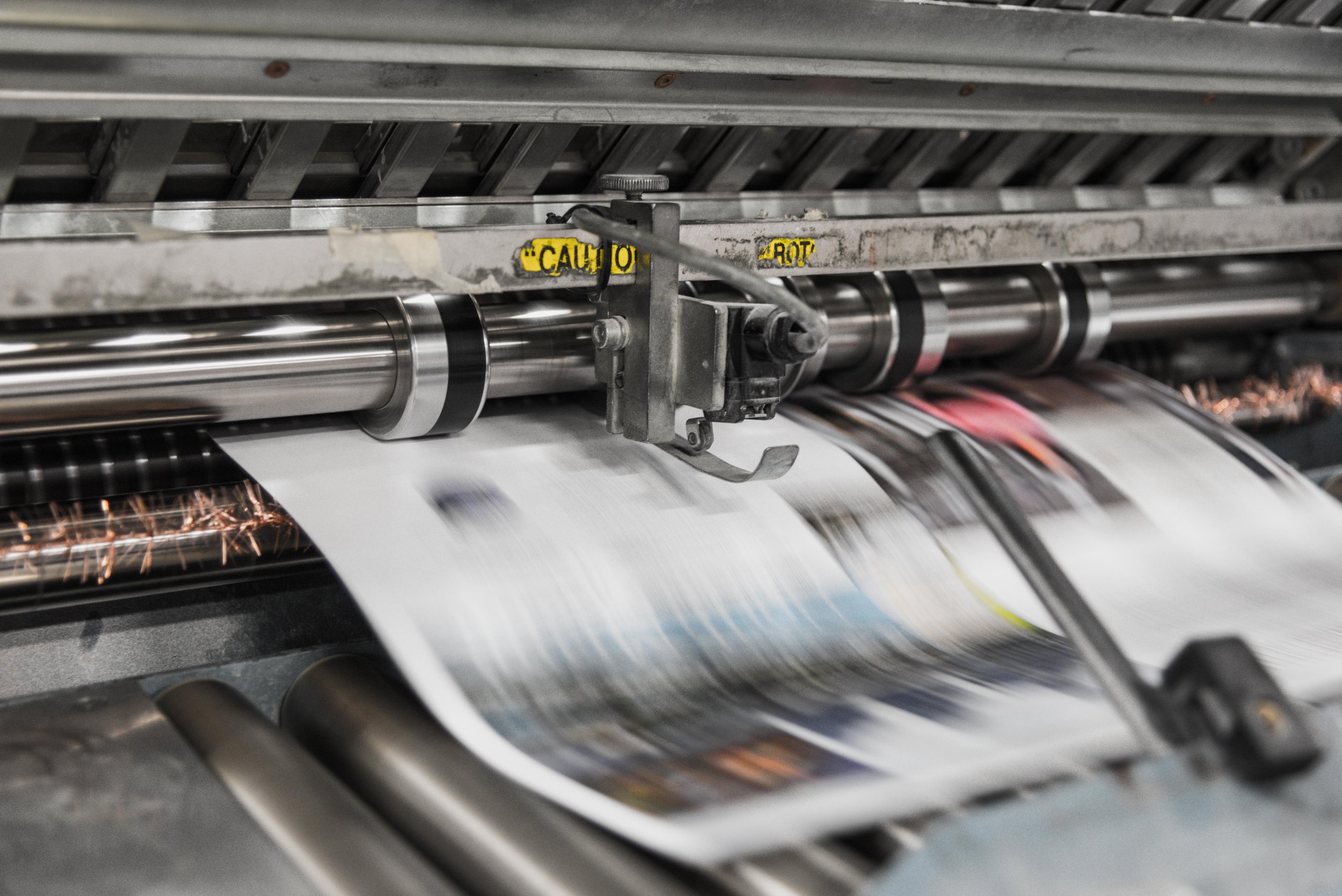“It became apparent to me that a salaried position meant the owner could save himself some money. Rather than reduce my work standards, and to also provide readers with information they deserved, I continued to work the extra hours, but without pay for those hours. I told myself it was my way of being of service, since I’d never served in the military.”
“I began working as an on-staff reporter at the Statesman- Examiner, a Colville, WA-based weekly newspaper, in 1991. I started at above the minimum wage, which was $4.25 at the time. News coverage beyond the usual city, county, schools and courthouse news included environmental issues, such as forestry and pollution of the Columbia River, locally relevant state politics, regional White Supremacists’ activities, and keeping tabs on a local far-right cult with aspirations to take over local government.
Obviously this was not casual small-town reporting; I ended up on a White Supremacist hit list (some of whose members are now doing time for five murders), and I had the lug nuts removed from a tire on my car (which I fortunately spotted before driving). A retired federal investigator urged me to become armed and taught me how to safely walk out a door.
When I first began the job I expected to need a little extra time as I learned the ropes. But after a year it became obvious that this job required more than 40 hours a week. I turned in my hours and was reimbursed for overtime, but it wasn’t long before I was told I was being put on salary. So was the Editor, who also engaged in long hours (he objected by sometimes inserting into his editorials comments regarding how he worked for Peace Corps wages).
It became apparent to me that a salaried position meant the owner could save himself some money. Rather than reduce my work standards, and to also provide readers with information they deserved, I continued to work the extra hours, but without pay for those hours. I told myself it was my way of being of service, since I’d never served in the military.
Then one day I realized that I was now working for less than minimum wage, in part because our salaries did not rise when minimum wages went up. There certainly was nothing prestigious about that kind of salaried work. I recall a few people from within the “professional” realm learning how low my wages were, and they were aghast.
Working extra gave me little in the way of “down” time for rejuvenating my energy. I worked while I ate lunch, and often while eating a quick-grab dinner. Five o’clock “time-to-go-home” meant nothing—after hours, without phone calls to take, etc., I could write faster and get more work done. And often there were evening meetings I needed to cover. I recall one night covering a meeting, going back to the office and writing it up 1 a.m., since it needed to be print-ready in the morning. When I arrived next day, the editor gave me an inquisitive look and asked how late I’d stayed. When I told him, he handed me my late-night work. It was gibberish. I had to write a new article about the meeting as fast as I could.
I did have a “comp” day on Thursdays, and used it for catching up on household chores. But then I would also work part of the day on Sundays, and there were frequently weekend events that required my attendance for write-ups.
At the same time there was another problem: I was being poisoned by fumes from the adjacent press room, and in 1994, after two years of sickness and a misdiagnosis of flu syndrome, I was diagnosed by Spokane’s Dr. Will Corell with Chemical Hypersensitivity Syndrome. (The state did finally investigate and fined the newspaper for numerous violations regarding storage of chemicals and improper discharge of toxic fumes. I was not the only sick employee. One co-worker developed Crohn’s disease – which I was diagnosed with later, and can be caused by chemical exposure; a young employee underwent emergency surgery for urinating blood, although nothing was found; another told me she gobbled aspirin like candy for her headaches, which stopped when she found another job; and my then-teenage son, who worked in the press room, broke out in sores all over his back during that time. Despite late-in-the-game efforts by the state to improve the indoor air quality, I continued to be sick—the chemical damage to my immune system was not going to be quickly undone.)
Dr. Corell advised reducing my workplace exposure as much as possible, eating foods grown without chemicals as much as possible, a regimen of supplements, and reducing the stress on my body by cutting my hours to 40 per week. This was all designed to re-build my damaged immune system. I made more effort to do some of my writing outside the office; to save article interview time, I advised people with story proposals to write a news release (that caused some to drop their interest in having a story written). After about a year I was down to 40 hours a week. My editor noticed the decline in productivity and hinted he was not happy.
But the damage to my health of having worked too many hours, along with the work-place toxic exposures (mitigation efforts were not adequate—visitors to the office continued to have stories about leaving with headaches), left me realizing in 1998 that I had to quit. Since 1993 I’d been on a cycle of one day sick, which included nausea, migraine headaches and, if I was lucky, vomiting (which seemed to quickly clear poisons from my body and reduce symptoms for that day). The next day I would be weak and shaky, and on the third day I would feel normal and energetic. The cycle would then repeat itself. Fortunately, my most sick day of the cycle did not hit full force until evening, which, although my work day was compromised by not feeling well, did allow me to get things done. But I certainly recall suffering through evening events I was covering for the paper; with the day’s toxic exposures overwhelming my immune system’s ability to respond, nausea and migraine pain were my companions while I toughed out the meetings.
I should have quit sooner, but could not imagine anyone wanting to hire me in my sick state.
Then friends offered part-time work on their organic farm, which helped me transition into self-employment. Away from the newspaper, slow improvements began. Five years after quitting the paper, I no longer had migraines, although other symptoms persisted.
I don’t regret making my best efforts to help the paper be its best. But the years since have been challenging. I can’t take any job wherein I may have exposure to chemicals, such as where plastic products are sold. So I started a crafts business and sold at outdoor festivals and arts-and-crafts shows. But many times I was sickened by something like a vendor’s scented candles, or from breathing traffic fumes on the way to shows. Nonetheless, I was financially self-reliant (although unable to afford a doctor familiar with chemical illness).
When de-regulation kicked the economy, my business began a steady decline in 2008.
Four years ago, faced with shrinking sales, I was offered the opportunity to write for the same paper, but from home. There was a familiar catch: I would earn $50 an article, which meant about $5 an hour due to the research involved. The pay was later upped to $60 an article, i.e. around $6 an hour. These pay tactics for “gig” work have become popular with small corporate-owned newspapers that put corporate profits over the best interests of readers.
There was an advantage in working strictly at home: I could control my environment and further reduce my exposure to chemicals. And my health did improve significantly; 25 years after my first in-office reaction to chemicals, I have fewer and less debilitating sick days. Financially, this full-time employment worked for me as long as I signed up for Social Security at age 62 to supplement my “gig” wages. I would have preferred waiting longer to dip into my SS, allowing it to build up beyond $627/month.
That “gig” job with the newspaper ended a year ago when a new publisher took over and, to further trim the paper’s budget, I assume, he offered me $25 an article instead of $60. At $2.50 an hour, I had no choice but to decline the “offer.”
—Lorraine Marie, journalist, Colville



